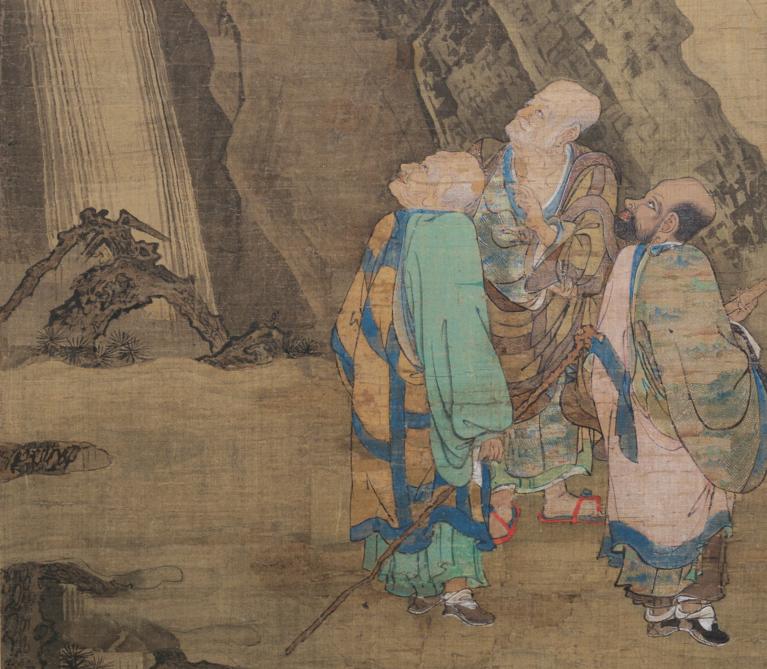Colloquia
A Symposium on East Asian Art in Honor of Professor Wen C. Fong
This symposium will feature fifteen paper presentations, and a related festschrift publication to follow will include about forty papers by Professor Fong’s students and several of his colleagues. Both will honor Wen Fong’s 45 years of teaching at Princeton, his years of leadership at The Metropolitan Museum of Art, and his unsurpassed impact on the field of Asian art history. The main title of the symposium and of the subsequent publication, “Bridges to Heaven,” pays homage to Wen Fong’s ground-breaking dissertation and his resultant early publication, entitled The Lohans and a Bridge to Heaven (1958). Many of Wen Fong’s students in Chinese, Japanese, and Korean art history will present new research that has been deeply influenced intellectually and methodologically by his teaching and has ventured “across many bridges,” linking art history with a multitude of other disciplines, including literature, political and social history, religion, anthropology, and geography.
Related
Symposium Program
Saturday, 1 April 2006
McCosh 50, Helm Auditorium
Princeton University
Registration and Coffee
8:30–9:30 am
Morning Session
9:30 am–1:00 pm
Welcoming Remarks
Jerome Silbergeld
Princeton University
Introductory Remarks
James F. Cahill
Emeritus, University of California, Berkeley
Wan-go Weng
Lyme, New Hampshire
Reconfiguring the Canon: The Art Historical Discipline
Chairs:
Shen C. Y. Fu
National Taiwan University
Lothar Ledderose
University of Heidelberg
Why Visual Evidence is Evidence: Rehabilitating Connoisseurship at the Start of a New Century
Maggie Bickford
Brown University
Regionalism in Han Dynasty Stonecarving and Lacquer Painting
Anthony Barbieri-Low
University of Pittsburgh
A Change of Clothes: Selective “Japanization” of Female Buddhist Images in the Late Heian and Kamakura Periods (12th and 13th Centuries)
Nicole Fabricand-Person
Lafayette College
Afternoon Session
2:30–5:30 p.m.
Material Illuminations: Inscriptions, Texts, and Print Media
Chairs:
Roderick Whitfield
Emeritus, SOAS, University of London
John Hay
University of California at Santa Cruz
Calligraphy and a Changing World: A Study of Yang Weizhen’s Inscription on “Album of Ancient Coins”
Hui-liang Chu
Cultural Affairs Bureau of Taipei County Government
Imag(in)ing Oriental Art in Late 19th-Century America: A Study on the Text and Color Illustrations of Oriental Ceramic Art
Hui-Wen Lu
National Tsing-hua University
“One Hundred Beauties” Multiplied
Christine C. Y. Tan
Princeton University
Fine Art Amateur Photography in Republican-Period Shanghai
Richard K. Kent
Franklin and Marshall College
Sunday, 2 April 2006
McCosh 50, Helm Auditorium
Princeton University
Registration and Coffee
8:30–9:30 am
Morning Session
9:30 am–12:30 pm
Cultural Contexts: Appreciating the Arts
Chairs:
Shou-chien Shih
National Palace Museum
David Ake Sensabaugh
Yale Art Gallery
Seeking Delight in the Arts: A Literary Gathering by Ikeda Koson (1801–1866)
Helmut Brinker
University of Zurich
Methods of Display and their Impact on Art Appreciation in mid-to-late Imperial China
Jan Stuart
Freer-Sackler Galleries
Making of the Royal Images: Documents and Paintings of the Chosŏn Dynasty (1392–1910)
Yi Song-Mi
Emerita, The Academy of Korean Studies
An Analytical Reading of the Portraits of Emperor Qianlong and his Consorts
Pao-chen Chen
National Taiwan University
Afternoon Session
2:00–5:30 pm
Inspiration from Realities: Art and Representation
Chairs:
Chu-tsing Li
Kansas University, Emeritus
Julia K. Murray
University of Wisconsin
Pictorial Maps and Topographic Paintings: Modes of Depicting Space during the early Qing Dynasty
Maxwell K. Hearn
The Metropolitan Museum of Art
Camel Mountain and Lotus Peak: Images Discovered in Nature and their Representation in Chinese Pictorial Art
Robert E. Harrist, Jr.
Columbia University
Apparition Painting
Yukio Lippit
Harvard University
The Song Experiment with Mimesis
Richard M. Barnhart
Emeritus, Yale University
Reflections on Chinese Art History
Wen C. Fong
Emeritus, Princeton University
Concluding Remarks
